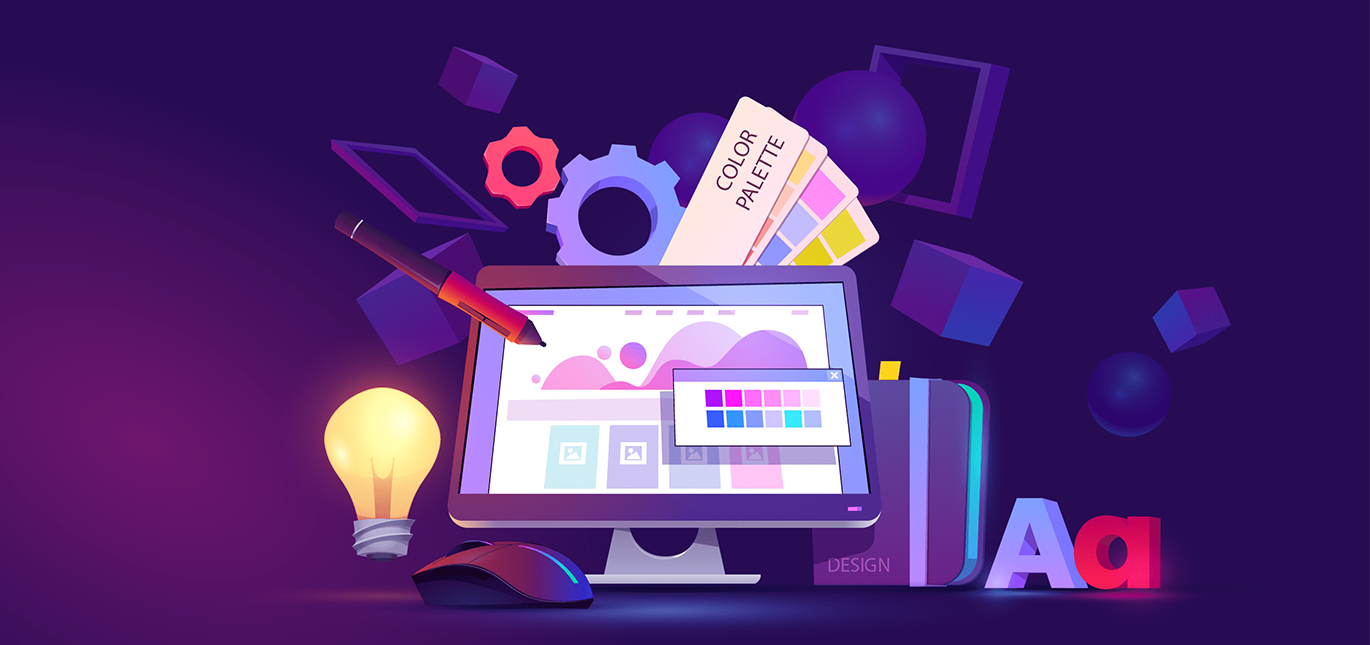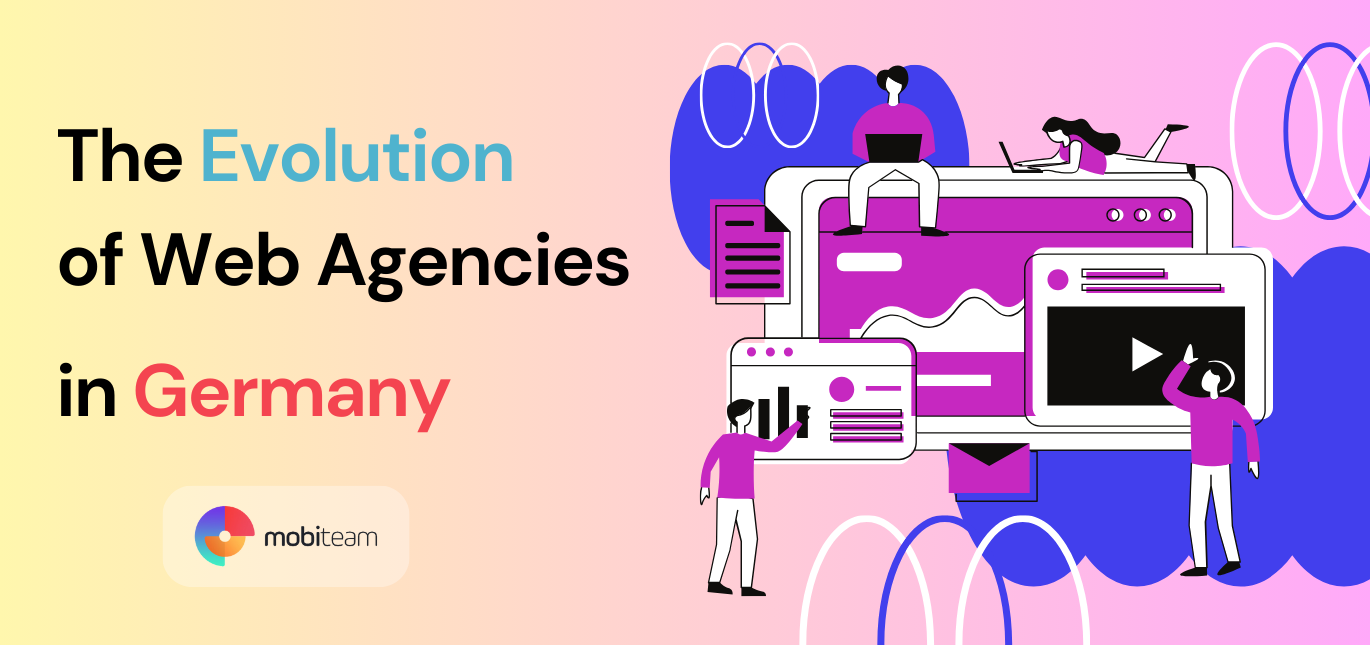You could not ask for a more exciting time to be a digital designer. Now more than ever you have affordable, easy-to-learn tools and resources that can produce professional-grade designs and products. If anything, the choices can be overwhelming, especially for a new freelance designer. That’s why we have put together a list of the best web design software for designers in 2022. If you are new to design or considering expanding your service offerings, use this list to learn more about some of the many platforms available to you.
There are a ton of amazing tools out there and more popping up every day. I’m including tools I have personal experience with at my agency helping my clients. If you are just starting out as a designer or web developer, try a few and see what you gravitate towards. Consider experimenting with a few (I try out a new software or two every week to stay up to speed) but when you find the right tool, focus on mastering it because it takes hours to do so.
As the saying goes, the tool does not mean anything if not properly used, and the tool will not define the quality of the product if not properly designed. At the end of the day, what’s important is that you are creating impactful designs and products that help users and that means using the tools that you know best. If you can build engaging landing pages in Microsoft PowerPoint then do it! These tools will give you constraints that can help or hinder your work but what’s more important is that you have an efficient workflow that accomplishes the requirements of the project.
#1 Figma
Figma continues to be one of the best design/prototyping tools for designers as it continues to refine what it already does well: making it easy for you to visualize anything, quickly. I liken Figma to a piece of paper and a pen – there are no constraints and the possibilities are endless.
Figma makes it incredibly easy to work in multiple mediums at once, drag virtually any visual asset onto the canvas or copy and paste from other platforms and it appears in Figma where you can manipulate it. A “sandbox” platform like this often can be quite complex but Figma has managed to make the platform intuitive to use even when combining functionality from multiple editor types such as vector creation, photo editing, and prototyping.
The Figma community is wonderful, just go on Instagram or Youtube to find answers and ideas from talented designers across the globe. Figma’s plugin library and templates are easy to install and further expand the capabilities of the platform so you’re not bouncing between Photoshop, Illustrator, and other platforms to create your assets. It’s also built for collaboration so notes are easy to collect and track.
Best For: Designers, new or advanced will find the platform easy to learn. It’s not limited to just applications or websites, you can use the platform for virtually any visual design project, basic photo/vector manipulation, or whiteboarding.
Learning Curve and Resources: Easy to learn for those new to visual design tools or those coming from other platforms like XD or Sketch. Tons of free resources and tutorials to answer any questions you encounter along the way.
Pricing: Figma is free to use with very few limitations. If you need team access you’ll need a paid plan based on how many team members you have.
Pros:
- Easy to learn
- Great community of designers and teachers
- Lightweight platform for desktop or browser
Cons:
- Robust platform may be intimidating for newcomers
- Some functions are buried (again, robust platform)
- Steeper learning curve if you implement responsiveness or components
#2 Canva
Sometimes a tool is overkill for the job and simplifying the experience can actually lead to better results. I used to use Figma to create all of my agency’s marketing content like cover images for blogs or carousels for Instagram. After some time I found that both the experience of creating the content and keeping it all organized felt cumbersome. On a whim, I tried Canva and found that the combination of simplifying the toolset, organizing my posts, and access to assets made the entire content creation experience much more efficient and enjoyable.
Canva offers a simplified design platform for all of your marketing needs including templates and pre-sized artboards for different social media channels and standard presentation and print sizes. If you can use PowerPoint you can use Canva so it’s incredibly accessible but doesn’t have so many constraints to make it useless. Its asset management is also helpful if you’re creating a lot of the same content over and over again and they offer additional tools like a video editor for Tik Tok and Instagram reels. I’ve even gone so far as to create an ebook with their template.
Best For: Designers creating marketing materials or visual assets as well as anyone who needs to create their own visual content and doesn’t have a design background.
Learning Curve and Resources: Very easy to learn, no real tutorials necessary.
Pricing: Canva is free to use but a paid plan gives you access to additional features and many more higher-quality assets.
Pros:
- Easy to learn
- Simple and fast to use with pre-made templates
- Huge asset library for both free and paid plans
Cons:
- Not ideal for user interfaces (though you could)
- Missing some asset manipulation features like in-depth photo editing
#3 Framer
Framer is akin to Figma and XD and from a usability and functionality perspective, relatively the same in all respects to what it can do. The reason I’m including it here is that Framer just released their new sites functionally which brings up an interesting trend in the design platform space: as these platforms become more robust, the line between design platform and no-code tool is almost disappearing. This is great for designers who now can create design AND launch functional apps and websites all in the same software without the aid of developers.
Framer is going a step beyond Figma and XD’s prototyping tools to allow you to create code from your designs and launch them as a functional website. Now you don’t have to export assets and translate designs to your website builder, you’re doing the work once in one application. I’m very keen to see if this move has prompted Figma and XD to explore the same because if that’s the case, it will be a game-changer for designers to be able to bring their work online. The competition will also ensure that the development side of their platforms will become more and more robust to compete with website builders in the market.
The platform just launched from beta so I’ve found it to work pretty well with a few exceptions. In the beta phase, I struggled to get the Figma importer to work for example but these kinds of issues are to be expected with new software. Framer’s community is smaller than the larger design players so you’re also going to find fewer templates and resources available to you.
Best For: Designers who want to offer development but struggle to learn website builders and want to stay within the platform they are familiar with.
Learning Curve and Resources: Easy to learn for those new to visual design tools or those coming from other platforms like XD or Figma.
Pricing: Framer is free for both the designer and the site builder if you use their domain. To get more bandwidth, CDN, and other hosting features you’ll need to choose from one of their three tiered plans.
Pros:
- Easy to learn
- All-in-one platform
Cons:
- Less community and free tutorials than other design platforms
- Less templates and resources
- Some bugs
#4 EditorX
Wix introduced EditorX as a beta about two years ago, expanding off of their easy-to-use website builder platform. The goal was to create a website builder that offered more flexibility to build dynamic websites than their traditional platform could but was still easy to learn and worked within their exosystem of business tools (marketing tools, their third-party app market, CRM, payment, and subscription platform, etc.).
The platform fills an interesting gap in the world of website builders since it’s able to create more dynamic websites than Wix/Squarespace platforms but is still an approachable visual-based builder. This means you can drag and drop elements around the screen and leverage modern frameworks like grids and flexboxes, but you don’t have to worry about classes and styling.
This makes EditorX a great web development platform for designers since you approach building websites as you would in Figma or XD. Given that ease of use, you are limited in what you can create so don’t expect to be able to easily build wildly interactive websites with tons of custom animations.
Wix is definitely invested in the platform, in the two years I have used it I’ve seen a lot of new features added and their product team is clearly listening to their users when it comes to their product roadmap. I expect to see some of the constraints I mentioned lifted as they continue to refine the platform.
Best For: Long-time designers looking to add website development to their services. The Wix platform is great for small business owners as it combines so many digital tools into one ecosystem, I’ve offered EditorX/Wix at my agency and it has been a game-changer for my small business clients.
Learning Curve and Resources: Easy to learn for those new to web design. Wix has curated a good university of tutorials and an active forum. There aren’t a lot of third-party tutorials from creators on Youtube yet but that’s starting to change. The platform offers a lot of pre-built sections you can easily add but there isn’t a huge marketplace for templates yet.
Pricing: You can build as many sites as you would like for free but to host them on your own domain will cost you a hosting fee. Wix offers a number of plans based on site functionality like eCommerce.
Pros:
- Easy to learn
- Huge ecosystem of additional tools and apps through Wix
- Robust functionality including eCommerce, subscriptions, social groups, blogs, and CMS
Cons:
- Limited interaction/custom animation abilities
- Not a lot of resources to learn the platform yet
- New platform/sometimes slow/bugs
#5 Webflow
It goes without saying that Webflow is going to make this list. It continues to be one of the most robust website builders while being relatively approachable for new users and the community has exploded in a way that makes learning and scaling your development work a breeze.
With another major round of funding, Webflow is clearly on a mission to dominate the website builder platform market by adding more native functionality and of course, marketing. As the platform becomes more and more advanced (and therefore, complex) they continue to invest in some of the best onboarding and training in the tech industry while also supporting their user base to push the boundaries of the platform’s abilities.
Webflow can be used to make the simplest landing pages or web applications and for that reason I liken it to Photoshop or After Effects: incredibly powerful creator tools that give you endless possibilities, which means a steeper learning curve. If you’re a designer and looking to offer website development as well, Webflow is a fantastic tool for your clients but don’t expect to master it overnight. Its fundamentals are built on coding so it’s less of a drag-and-drop visual experience.
Best For: Webflow is great for freelancers looking to add web development to their offering and the light editor will make it easy for your clients to manage their website too. In some cases, it might be overkill for simple landing pages especially if you can work more quickly in another platform.
Learning Curve and Resources: Not the easiest to learn, especially if you don’t have any coding experience but if you’re willing to invest your time, you’ll be supported by a ton of great free and paid resources as well as thousands of templates to jumpstart your work.
Pricing: You can have ten projects with a free Webflow account with some limitations of features. There are several account tiers if you need team members in your account for example. Each website will require a hosting package based on website functionality in order to make the site live on your domain.
Pros:
- Massive community for learning and resources
- Ability to create highly-interactive pages and animations
- Almost limitless for custom functionality especially when coupled with third-party apps and code
Cons:
- Steeper learning curve
- Limits your ability to optimize code for SEO
- Can be overkill for some projects/clients especially if you are new to the platform
To Sum up
The list of web design software has been selected based on the pros and cons you have already seen. However, we do recommend looking forward to other tools you feel comfortable with. In 2022 there are dozens of alternatives for each web design software that you can replicate the same work. Most of the time it’s just a matter of comfort and knowledge. So, you cab easily opt-out for Adobe software (such as XD) to replace tools listed above.
Here at Mobiteam, we use different types of software for web design, and as a part of our custom approach, each project is tailored individually based on the client’s needs.






